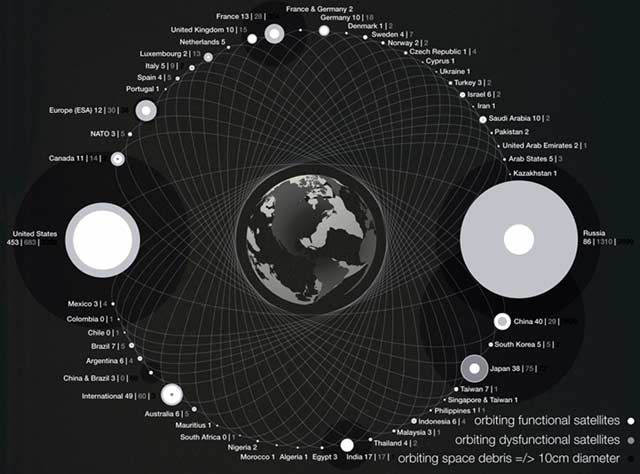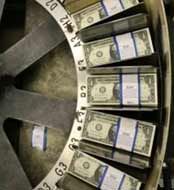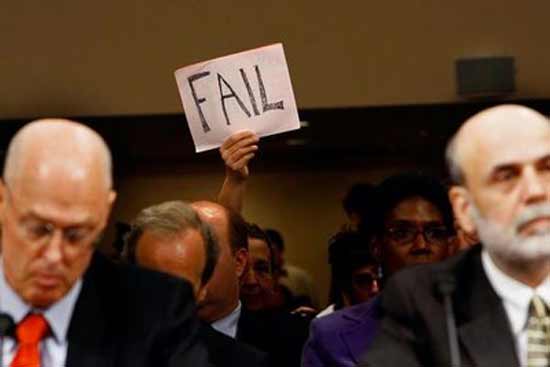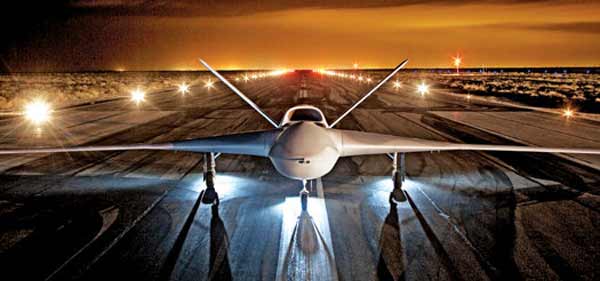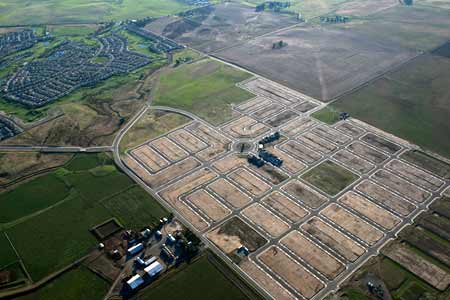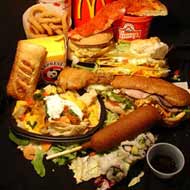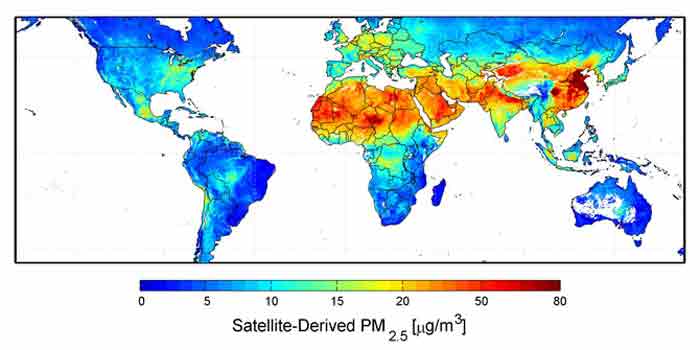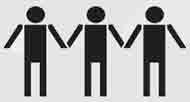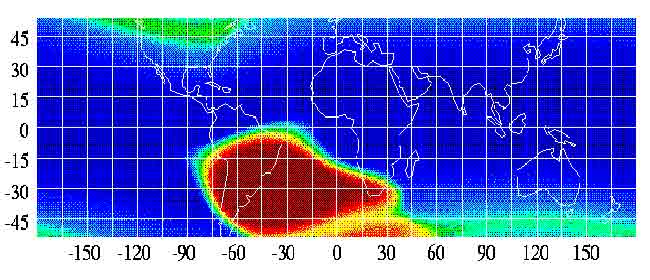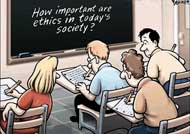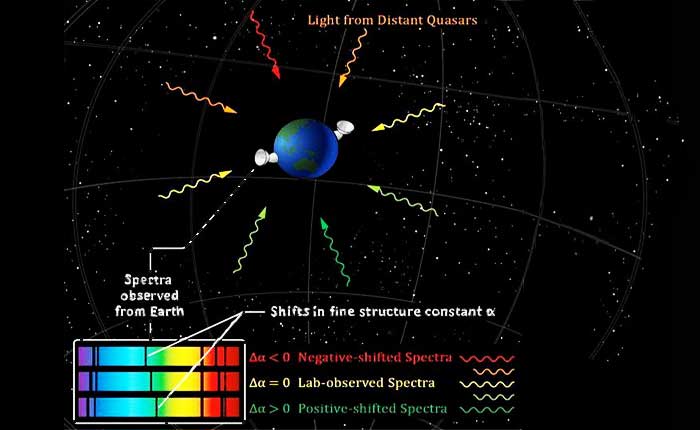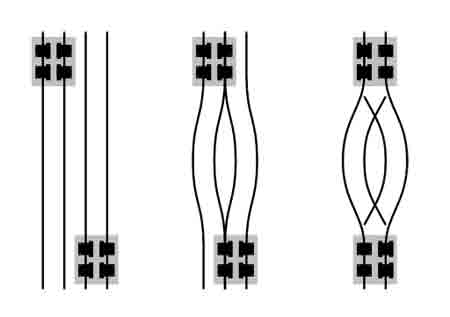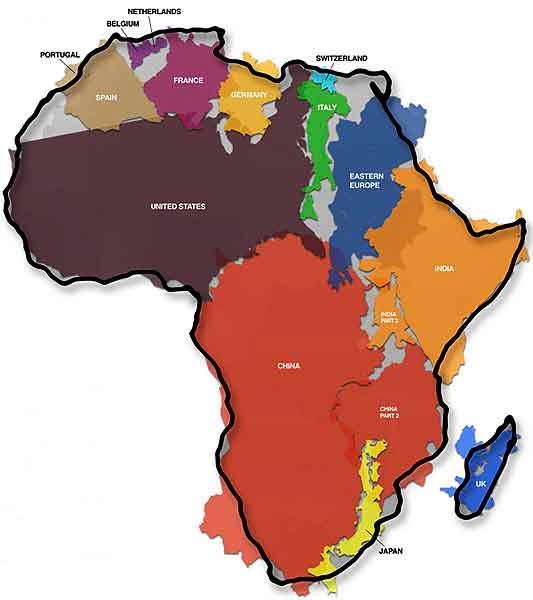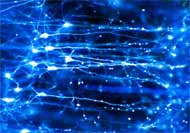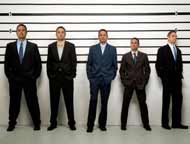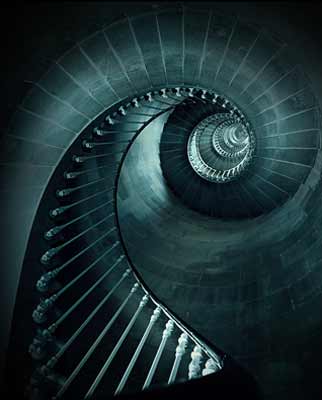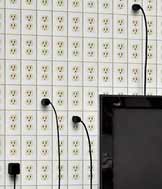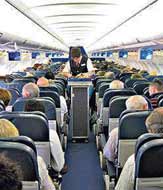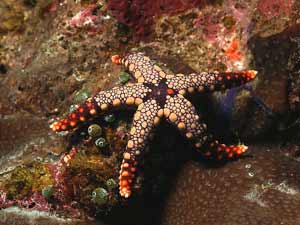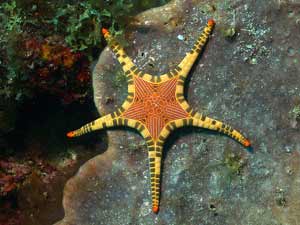A single sperm has 37.5 megabytes of DNA information in it.
That means a normal ejaculation represents a data transfer of 1,587.5 terabytes.
Data Transfer
Nov. 30, 2010
America on the Brink? A former investment banker with Morgan Stanley gives his opinion:
|
||
| Economists peddling dire warnings that the world’s #1 economy is on the brink of collapse, amid high rates of unemployment and a spiraling public deficit, are flourishing. Economist Nouriel Roubini, who predicted the chaos wrought by the subprime mortgage crisis and the collapse of the housing bubble, feels the US has run out of bullets and any shock at this point would tip the country back into recession. Boston University professor Laurence Kotlikoff, who warned as far back as the 1980s of the dangers of a public deficit, has recently lent credence to such dark predictions in an International Monetary Fund (IMF) publication. He says a minor trade dispute between the US and China could make some people think that other people are going to sell US treasury bonds. That could lead to a sell-off of government bonds that causes the public to withdraw their bank deposits and buy durable goods. “In a short period of time, the Federal Reserve would have to print trillions of dollars to cover its explicit and implicit guarantees. All that new money could produce strong inflation, perhaps hyperinflation,” he says. One poll shows 65% of Americans believe there will be a new recession. Nobel Prize-winning economist Vernon Smith says the US is in for a “long slog.” Even the IMF predicts a potential “loss of market confidence in the recovery.” Meanwhile, stacks of $1 bills pass through a machine at the Bureau of Engraving and Printing in Washington, DC. There’ll be lots more to come. Costs, 2001 — 2007 of legislation enacted since Januuary 2001 from the Congressional Budget Office show that tax cuts are the largest contributor to the re-emergence of large budget deficits. If you’re interested in how where you live stacks up tax-wise: The World Bank’s Highest Individual Marginal Tax Rate list by country and/or by year. |
On 13 October 1989, Senator Ernest Hollings of South Carolina, said during a speech on the Senate floor, “The most reprehensible fraud in this great jambalaya of frauds is the systematic and total ransacking of the Social Security trust fund. In the next century the American people will wake up to the reality that those IOUs in the trust fund vault are a 21st century version of Confederate bank notes.” On 9 October 1990, Senator Harry Reid of Nevada expressed his outrage at the practice during a senate speech. Pointing to a chart displaying a single word in large letters, Senator Reid said, “On that chart in emblazoned red letters is what has been taking place here: Embezzlement. During the period of the past 10 years, the growth we have had has been from two sources: one, a large credit card with no limits on it, and, two, we have been stealing money from Social Security.” A quote from the introduction to the 2009 Social Security trustees report: “Neither the redemption of trust fund bonds, nor interest paid on those bonds, provides any new net income to the Treasury, which must finance redemptions and interest payments through some combination of increased taxation, reductions in other government spending, or additional borrowing from the public.” In other words, the trust fund is of no current economic value. $2.54 trillion of the Social Security surplus revenue has been diverted and used for other purposes. Oh, well — I’m sure it seemed like a good idea at the time.
| More from the former Morgan Stanley investment banker: The main event — WWIII will engulf America in a “New Age of Warfare” with trillions and trillions and trillions of new debt, year after year after year. Yet they’re silent, in denial. Nobody’s talking about all this new debt ahead. The Pentagon warns of “the mother of all national security issues. By 2020 there is little doubt something drastic will happen.” As the planet’s carrying capacity shrinks, an ancient pattern of desperate, all-out wars over food, water, and energy supplies will emerge. Warfare defines human life. One lesson from history is that there’ll always be temptation to stretch limits. One common theme, excessive debt accumulation — whether government, banks, corporations, or consumers — poses a greater underlying systemic risk than it seems when times boom. Merrily roll along for an extended period, then bang! Confidence collapses, lenders disappear, a crisis hits. History points to warning signs that risk is growing — but policymakers become drunk with credit-bubble-fueled success and say (as have their predecessors for centuries) “This time is different.” Nixon advisor Kevin Phillips writes a warning in Wealth and Democracy: “Most great nations at the peak of their economic power become arrogant, wage great wars at huge cost, waste vast resources, take on monstrous debt, and ultimately burn themselves out.” Americans love war; it’s in their psyche, genes, and cultural mythology. Deep down they’re war-mongers and war-profiteers. America needs war to prove it’s still the world’s sole superpower, not falling second to China and the rest of the world. Forget economics, politics, ideologies: it’s a macho ego thing. [And this makes Americans sound like a gang of teenaged boys.] |
||
| Hot tip: invest in “Disaster Capitalism.” This new sector is the core of the emerging “new economy” that generates profits by feeding off other peoples’ misery: wars, terror attacks, natural catastrophes, poverty, trade sanctions, market crashes and all kinds of economic, financial and political disasters. In this Orwellian future, everything must be seen with new eyes: “disasters” are IPOs, opportunities to buy into a new “company.” Corporations like Lockheed-Martin are the real emerging nations of the world, not some dinky countries. They generate huge profits, grow earnings. And seen through the new rose-coloured glasses of Disaster Capitalism they are hot investment opportunities. Today, global instability does not just benefit a small group of arms dealers; it generates huge profits for the high-tech-homeland-security sector, for heavy construction, for private health-care companies, for the oil and gas sectors — and, of course, for defense contractors. |
||
US military attacks by drone aircraft are intensifying. Although drones are aircraft, engineers needn’t automatically design control centres that look and work like aircraft cockpits. Cockpits evolved to do the best job in the space allowed, and, although familiar, control systems for drones can be much better designed if the whole concept is divorced from the cockpit metaphor. Drone operators are more aware of the consequences of their actions than are fighter pilots because a fighter pilot drops a bomb and flies away while a drone stays in the area to ensure the target was destroyed. The video the drone operator can see, combined with high altitude flight, means they spend time viewing in gory detail the damage they’ve done — something fighter pilots didn’t do. In his book On Killing: The Psychological Cost of Learning to Kill in War and Society, author Lieutenant Colonel Dave Grossman proposes that contrary to popular perception, the majority of soldiers in war never fired their weapons due to an innate resistance to killing. Realising this, the military instituted training measures (for example, using man-shaped targets rather than bullseye targets and dispersing responsibility for any killing done to the group and/or to the commanding officer) to break down this resistance. This has successfully raised soldier firing rates to over 90%. However, great psychological costs weigh heavily on the combat soldier who is forced to kill.
| Terrorism Ironies: The first Justice Department lawyer to sign off on the Obama administration’s brief to dismiss a lawsuit seeking an injunction on executing Anwar al-Awlaki? That would be Tony West, the assistant attorney general for the civil division, one of a group of lawyers whom Keep America Safe (run by Liz Cheney, daughter of former Vice President Dick Cheney) called the “Al Qaeda Seven” (7 lawyers who previously represented or advocated for terror suspects). Another irony: West represented John Walker Lindh, the Marin County dilettante who fought for the Taliban at the beginning of the Afghanistan war. Does the West of 2010 think the government actually had the right to simply kill Lindh after all? (It seems to me he might be going in the wrong direction.) |
||
| An attorney was taken into custody after a Mississippi Chancellor cited him for criminal contempt of court for failing to recite the 31-word US Pledge of Allegiance at the outset of the morning’s court proceedings. West Virginia State Board of Education versus Barnette, 319 US 624 (1943) was a case brought to the US Supreme Court based on religious freedom issues. The Court upheld First Amendment freedom of speech in the case concluding that no one can compel another to recite the Pledge of Allegiance — not even a judge in a courtroom. Supreme Court Judge Frank Murphy wrote in his concurrence: “The right of freedom of thought and of religion, as guaranteed by the Constitution against State action, includes both the right to speak freely and the right to refrain from speaking at all, except insofar as essential operations of government may require it for the preservation of an orderly society — as in the case of compulsion to give evidence in court. Without wishing to disparage the purposes and intentions of those who hope to inculcate sentiments of loyalty and patriotism by requiring a declaration of allegiance as a feature of public education, or unduly belittle the benefits that may accrue therefrom, I am impelled to conclude that such a requirement is not essential to the maintenance of effective government and orderly society” (from comment dated 7 Oct 2010 13:35). If you ask me, allegiance should flow both ways. |
||
Model homes sit vacant in the centre of a 750-home housing development where construction was halted 20 November 2008 in Rio Vista, California. The northern California city is considering filing for bankruptcy as it struggles to deal with an $816,000 deficit in its general fund. The fund is used for a variety of purposes, including employee wages.
| The substance resembles powdered sugar and could revolutionise the way chemicals are used. Each particle of dry water contains a water droplet surrounded by a sandy silica coating. In fact, 95% of dry water is “wet” water. Scientists believe dry water could be used to combat global warming by soaking up and trapping the greenhouse gas CO 2. Tests show that it is more than 3 times better at absorbing CO 2 than ordinary water. Dry water may also prove useful for storing methane and expanding the energy source potential of natural gas. The technology could be adapted to create “dry” powder emulsions (which are mixtures of two or more unblendable liquids such as oil and water) researchers believe. Dry emulsions could make it safer and easier to store and transport potentially harmful liquids. |
||
| The distinction between what is considered a food (something that your body wants or needs in order to function optimally) or a drug (something that your brain wants or needs in order to function optimally) is becoming increasingly difficult to define. Indeed, the routine use of some substances, such as stimulants and depressants, is so universal that most of us do not even consider them to be drugs, but, rather, actual food. Coffee, tea, tobacco, alcohol, cocoa, or marijuana — are they nutrients or drugs? In truth, anything you take into your body should be considered a drug, whether it’s obviously nutritious or not. Even molecules that are clearly nutritious (such as essential amino acids lysine and tryptophan, available in bulk at your nearest grocery store) exhibit properties that many of us would attribute to a drug. The ingredients in plants and animals we eat are very similar, if not identical, to the neurotransmitters our brains and bodies use to function normally. Even primitive one-celled organisms produce many of the same chemicals that are in our brains. Therefore, whether we choose to eat a bunch of broccoli, a plate of sushi, or a heap of amœba, the chemicals each meal contains will likely alter how our neurons function and, therefore, how we feel or think. |
||
A subcategory of airborne particles that epidemiologists suspect contribute to millions of premature deaths each year is called fine particulate matter (PM2.5). It includes particles 2.5 micrometres or less in diameter, about 1/10 the width of a human hair. These small particles can get past the body’s normal defenses and penetrate deep into the lungs. The map shows very high levels of PM2.5 in a broad swath stretching from the Saharan Desert in Northern Africa to Eastern Asia. When compared with maps of population density, it suggests more than 80% of the world’s population breathe polluted air exceeding the World Health Organization’s recommended level of 10 micrograms per cubic metre. Levels of PM2.5 are comparatively low in the United States, though noticeable pockets are clearly visible over urban areas in the Midwest and East.
| There may be a good reason why people instantly make a grab for an injured finger or toe. Touching oneself provides immediate pain relief, a study has found. The effect is due to change in the way the body is represented in the brain. Scientists used a technique called thermal grill illusion (TGI) to make volunteers feel their middle finger was painfully hot. Participants had TGI induced in both hands, and then immediately touched the 3 fingers of one hand with the same fingers of the other, reducing the sensation of heat by 64%. |
||
| Ivy Compton-Burnett was once asked what quality she valued most in her friends and gave the famous reply “availability”. She might have loved our lives now, when we’re all available and plugged in to friend, foe, employer or subordinate, any hour of the day or night. But your response to the latest development in the technology of availability will depend largely on your age. If you’re over 30, Facebook Places will probably sound like a nightmarish submission to surveillance; under 30, it’ll seem like a cool way to hook up with friends. If you think for a moment of the speed with which we’ve moved from a world in which you could phone people at home and chance your luck, to one in which we all expect to be able to phone each other at any time, anywhere in the world, it becomes clear that these shifts in communication carry an element of compulsion with them. Leave a message: wait for your friends to call back. That once seemed perfectly adequate. “For all the talk of a generation empowered by the Net, today’s teens are sure that at some point their privacy will be invaded but believe that this is the cost of doing business in their world. My grandmother was proud to be in America, where things were different. Every morning we went together to the mailboxes of our apartment building. On many days she would tell me, as if it had never come up before: 'In America, no one can look at your mail. It’s a federal offense.’ For me, this civics lesson at the mailbox joined together privacy and civil liberties. I think of how different things are for today’s teenagers, who accommodate the idea that their e-mail might be scanned by school authorities. Not a few sum up their position by saying in one way or another, 'The way to deal with it is to just be good.’ My hope is that we rediscover our need for privacy.” — Sherry Turkle |
||
The South Atlantic Anomaly (SAA) refers to the area where the inner Van Allen radiation belt comes closest to the earth’s surface. This leads to an increased flux of energetic particles in the region and exposes orbiting satellites to higher-than-usual levels of radiation. The effect is caused by the non-concentricity of the earth and its magnetic dipole; the SAA is the near-earth region where the earth’s magnetic field is weakest. Van Allen radiation belts are symmetric with the earth’s magnetic axis, which is tilted with respect to earth’s rotational axis by an angle of ~11º. The intersection between the magnetic and rotation axes is located ~500 kilometres (300 miles) more to the north, above the centre of the earth. Because of this tilt and translation, the inner Van Allen belt is closest to the earth’s surface over the south Atlantic ocean, and farthest from the surface over the north Pacific ocean. Predictions estimate that by 2240 the SAA may cover approximately half of the southern hemisphere. The SAA is of great significance to astronomical satellites and other spacecraft that orbit at several hundred kilometres’ altitude; these orbits take satellites through the anomaly periodically, exposing them to several minutes of strong radiation caused by trapped protons in the inner Van Allen belt. The International Space Station, orbiting with an inclination of 51.6°, requires extra shielding to deal with this problem. The Hubble Space Telescope does not take observations while passing through the SAA. Astronauts are also affected by this region which is said to be the cause of peculiar “shooting stars” seen in their visual fields. Passing through the SAA is thought to be the reason for the early failures of the Globalstar network’s satellites. NASA reports that modern laptops have crashed when the space shuttle flights pass though the anomaly.
| In a study published in 2003, experimental philosopher Joshua Knobe presents passersby in a Manhattan park with the following scenario: “The CEO of a company is sitting in his office when his vice president of research and development comes in and says, 'We’re thinking of starting a new programme. It’ll help us increase profits, but it will also harm the environment.’ The CEO responds that he doesn’t care about the environment, but he wants to make as much profit as possible. The programme is carried out, profits are made and the environment is harmed. Did the CEO intentionally harm the environment?” The vast majority of people Knobe quizzes — 82% — say he did. But what if the scenario is changed such that the word “harm” is replaced with “help”? In this case the employee says, “We’re thinking of starting a new programme. It’ll help us increase profits, and it will also help the environment.” The CEO still doesn’t care about the environment, he just wants to make a profit. Profits are made and the environment is helped. Now faced with the question, “Did the CEO intentionally help the environment?” just 23% of Knobe’s participants say yes. This asymmetry in responses between the "harm" and "help" scenarios, now known as the Knobe effect, provides a direct challenge to the idea of a one-way flow of judgements from the factual or non-moral domain to the moral sphere. “These data show that the process is actually much more complex,” argues Knobe. The moral character of an action’s consequences seems to influence how non-moral aspects of the action — in this case, whether someone did something intentionally or not — are judged. But personally, I don’t think these scenarios are equivalent to each other. There is a difference between omission and commission. |
||
| Is the US the only country that measures things by feet, gallons, pounds, and degrees Fahrenheit? No. Liberia uses the same system, which is not a surprise considering that the country was started by former American slaves (who named their capital after American president James Monroe) and it was only recently that Liberia’s president was not a descendent of the original American emigrants. And there is a 3rd country that uses the system — Myanmar. As a former British colony, they of course adopted the English system. After gaining independence, the country changed its name from Burma but not how it measured things. The name "Burma" is derived from the Burmese word "Bamar", which in turn is the colloquial form of Myanmar, both of which historically referred to the majority Burmans (or the Bamar). Depending on the register used, the pronunciation would be “Bama”, or “Myanmah”. The name “Burma” has been in use in English since the time of British colonial rule. In 1989, the military government officially changed the English translations of many colonial-era names, including the name of the country to “Myanmar”. The renaming remains a contested issue. While most of the name changes are closer to their actual Burmese pronunciations, many opposition groups and countries continue to oppose their use in English because they recognise neither the legitimacy of the ruling military government nor its authority to rename the country or towns. |
||
One of the supposed fundamental constants of nature, the fine-structure constant, appears not to be constant after all. Denoted as α (alpha), the fine-structure constant is the coupling constant determining the strength of the interaction between electrons and photons. A team of astrophysicists in Australia measured the number in about 300 faraway galaxies and consistently found that it measures differently than on Earth. Professor John Webb from the University of New South Wales even states that it “seems to vary continuously along a preferred axis through the universe,” which effectively means we’re back to square one on figuring just about everything out. Burn the books.
| Starting at the very beginning is not necessarily a very good place to start — at least when it comes to deciding which books to buy or read. Unless you are Edward Bulwer-Lytton (author of Paul Clifford, whose opening sentence “It was a dark and stormy night” has become a byword for purple prose), most writers make an effort to grab you with their first sentence (“It was a bright, cold day in April and the clocks were striking thirteen”; “Many years later, as he faced the firing squad, Colonel Aureliano Buendia was to remember that distant afternoon when his father took him to discover ice” — you know, that kind of thing) but you can’t be sure of the quality of what is to follow. What starts with a bang may end with a chapters-long, drawn-out whimper. Ford Madox Ford recommended instead that readers "open the book to page 99 and the quality of the whole will be revealed to you". A new website, page99test.com, has been launched to test that premise. It offers (courageous) authors and aspiring authors the chance to upload the 99th page of their works and they invite readers to comment on whether they would buy, or like to read, the rest. (P G Wodehouse passes the test.) |
||
| Lonely Planet’s Best in Travel 2010 guidebook lists the top 10 countries for 2010. They are: El Salvador, Germany, Greece, Malaysia, Morocco, Nepal, New Zealand, Portugal, Suriname and the US. (Note that the list is in alphabetical sequence, not in order of merit.) Further, in the 2010 Mercer Worldwide Quality of Living Survey, Auckland came out in 4th place in the top 10 list of the world’s most liveable cities. Wellington just missed out on a top 10 placement, being judged 12th worldwide. But when it came to the eco-city ranking, Wellington beat out Auckland ranking 5th worldwide while Auckland came in 13th. |
||
A funicular or funicular railway, incline, inclined railway, inclined plane, or cliff railway, is a cable railway in which a cable attached to a pair of tram-like vehicles on rails moves them up and down a steep slope; the ascending and descending vehicles counterbalance each other. The word is from the Latin funiculus, a diminutive of funis, “rope”. The basic principle of operation is that 2 cars are permanently attached to each other by a cable, which runs through a pulley at the top of the incline. Counterbalancing of the 2 cars, with one ascending and one descending the slope minimises new energy input needed to lift the ascending car. Winching is normally done by an electric drive working on the pulley. Sheave wheels guide the cable to and from the drive mechanism and the incline cars. A few funiculars have been built using water tanks under the floor of each car which are filled or emptied until just sufficient imbalance is achieved to allow movement which is then controlled by a brakesman. Early funiculars used two parallel straight tracks, with separate station platforms for each vehicle. Between the tracks is sufficient space for the two cars to pass at the mid-point. Examples of this type are the Duquesne Incline in Pittsburgh, Pennsylvania, and most cliff railways in the UK. Later new layouts using less space have been developed, usually having only 2 or 3 rails for most of the slope and four rails only at dead centre (the passing section). Cars used with a 2-rail configuration have flanges on both sides of the outboard wheels, keeping them aligned with the outer rail and holding each car in position. The inboard wheels are unflanged and ride atop the opposite rail thereby easily crossing over the rails at the passing track, avoiding the need for switches and crossings. In layouts using 3 rails, the middle rail is shared by both cars. The 3-rail layout is wider than the 2-rail layout but the passing section is simpler. Some 4-rail funiculars have the upper and lower sections interlaced and a single platform at each station. The Hill Train at Legoland, Windsor, is an example of this configuration. The track layout can also be changed during the renovation of a funicular, and often 4-rail layouts have been rebuilt as 2- or 3-rail layouts — for example, the Wellington Cable Car in New Zealand was rebuilt as 2-rail.
| The name James is derived from the same Hebrew name as Jacob, meaning “holds the heel” (in the Genesis narrative, Jacob was born grasping Esau′s heel and later bought his birthright). The name “Jimmy” is often used as a nickname for someone named James because Jimmy seems to be less formal. The name came into the English language from the French variation of the late Latin name, Iacomus; a dialect variant of Iacobus, from the New Testament Greek Iákōbos, from Hebrew word Yaʻaqov. The development Iacobus > Iacomus is likely a result of nasalization of the o and assimilation to the following b (intermediate Iacombus) followed by simplification of the cluster mb through loss of the b. Diminutives include: Jim, Jimmy, Jimmie, Jamie, Jimbo, Jamey, and others. It may be abbreviated to “Jay”. Includes Jacob, Chobi, Kobi, Coby, Jake, Jago, Jack, Jackie, Jaime, Jem, Jacques, Iago (as in “Santiago”), Diego, Jaeckel, Giacomo, Shamis, Hemi. Via Pragmatos. |
||
|
||||
Africa’s True Size
An unfathomably vast terrain comprising 49 nations, the sub-Sahara represents nearly 20% of the earth’s landmass. Yet its total economy is tinier than Florida’s. Here, 300 million people get by on less than $1 a day. Until they don’t: it is the planet’s biggest tomb, where compared to the 1960s, twice as many children under the age of 5 are now dying each day from disease; a bottomless badland where $500 billion of Western aid since World War II has barely made a dent in the poverty; a region whose market share of world trade is shrinking by the hour as it gets left behind, perhaps permanently, in the dust of globalisation; a place so desperate for everything — cash, trade, investment, infrastructure — and so powerless to negotiate strategically, that it’s pretty much up for sale to the highest bidder. The suction China is applying in the sub-Sahara is one of the most sweeping, bare-knuckled, and ingenious resource grabs the world has ever seen. And of mutual benefit to them both.
| Two proverbial heads can indeed be better than one — but only under certain circumstances. Through a simple experiment where volunteers cooperated to find a hidden image in a screen, pairs trumped individuals if they freely discussed their disagreements, not just about what they saw but how confident they were in their decision. But the partnership fell apart if one person was incompetent but not aware of it, either through personal ineptitude or because that person had dodgy information. In this case, two heads became worse than one, and the team would have done better by just ignoring the inept member. The failure of groups to outperform their individual members comes from situations where people don’t communicate the evidence for their decision and how reliable that evidence is. People who don’t know their own shortcomings limit the potential of the groups to which they belong. |
||
| An idea comes from a combination of the collected and crystallised experiences of our ancestors (embodied as the species-specific architecture of our brains) and in the ever-changing, dynamic, adaptive plasticity of our neural tissue as it learns, remembers, experiences, and takes its unique shape. Particular persons develop in response to the prods and pokes of random vicissitudes that sum together to make a life. This is rather flowery talk that I normally wouldn’t pass on but I’ve made an exception here. To me, the important part of what was said is the idea that our DNA is, essentially, information about lessons our ancestors have learned. In a certain sense I can see that. How do we come to know about the world? Modern neuroscience tells us that our information is acquired by specialised sensory neurons, adapted to detect specific types of energy. Possibly the most interesting receptors of all are the light-sensitive cells in the retina that allow perception of colour. There are 3 types of retinal colour sensors in primates: yellow, green, and violet — or long, medium and short. In the early 20th century, Jacob von Uexküll generalised the concept of World-as-Idea by introducing the concept of the Umwelt. As he explained it, Umwelt is the subjective bubble that surrounds individual organisms. It depends on their sensory apparatuses what they must do with their sensations (find specific kinds of food, find mates of the same species, avoid predators and so forth). Humans have extended their Umwelt mechanically for centuries but gene therapies can allow a more direct change. Pigeons can see into the ultraviolet. A simple medical procedure could allow you that talent, increasing the number of colours you can perceive by an order of magnitude. Who knows what you could learn then? |
||
Chinese architecture company MAD Architects has created a conceptual design of a housing complex that should eventually be built in Beihai. The project is named “Fake Hills” and designers are claiming that it will significantly reduce consumption of energy by allowing natural air and light to filter through the construction. Multiple botannical gardens will help to regulate temperature and humidity and it is hoped the finished complex will become a tourist attraction.
| Ever found yourself dumped by a friend embarking on a romance? Don’t worry, you’re not the only one. For according to Oxford University scientists, every time we start a relationship we jettison 2 of our closest friends. Most of us simply don’t have enough time for intimate friendships with more than 4 or 5 people, research shows. And a new love interest leads to 2 friends being pushed out of the inner circle. Men tend to have 4 or 5 intimate friends, women 5 or 6. If you go into a romantic relationship it actually costs you 2 friends in that inner core of relationships. Instead of having the typical 5 friends, you’ll only have 4. Bearing in mind that one of those is the new person that has come into your life, it means you have to give up 2 others. But it’s not just romance that can push out close friends. Children or buying a dog can have the same effect. You can only have 5 slots for deeply intense and meaningful relations. Those individuals don’t have to be human — they can be your dog or your favourite chrysanthemum plant; they can be people in an entirely fictional world, soap opera characters, god or saints. |
||
| What influences people when picking out a possible perpetrator in an identification parade? Having seen them at the scene of the crime? Not necessarily. People are more likely to identify line-up members they dislike and less likely to identify someone they find likeable. Such decisions are automatic and spontaneous rather than thought out. This “liking bias” might be behind a growing number of documented cases in which mistaken identifications contributed to the convictions of people who were later proved innocent through DNA testing. The legal system finds eyewitness identification evidence compelling but it has contributed to many wrongful convictions over the years. Eyewitness error represents a significant cost to society and the criminal justice system. The first cost is an innocent person is jailed, the second cost is once an individual has been identified, police investigations may narrow, so the perpetrator remains at large. Most people think their memories are reliable but no-one is exempt from vulnerability to bias. People tend to assume the police have caught someone and that that person is standing in the line-up. |
||
| [Two of the] 6 reasons why you’ll never upload your mind into a computer: the human brain only needs 20 watts to run the app called You, but with almost 7 billion of us and counting, we’re already straining the earth’s ability to host us all. Meanwhile, you know how much juice one Google data centre consumes just to index the latest LOLcats (a task much, much simpler than hosting your digital consciousness)? 100 million watts. Do the math. Furthermore, when the server running You goes kaplooie, is your “backup” really you, or just a clone of you that takes your place now that the “real” you is lost? |
||
| A study has found that high levels of background noise can diminish the sensitivity of people’s palates, making food taste less appealing. Experts believe that the roar of an aircraft’s jet engines could explain why diners are frequently left unimpressed by the food dished up by the cabin crew. Researchers also discovered that pleasant sounds can increase people’s enjoyment of meals. This could help restaurateurs choose the right music and ambience to enhance diners’ experiences. |
||
| Out-of-body experiences in humans are likely caused by the brain’s arousal system, which regulates different states of consciousness. “In humans, we know that if we disrupt the (brain) region where vision, sense of motion, orientation in the earth’s gravitational field, and knowing the position of our body all come together, then out-of-body experiences can be caused literally by the flip of a switch,” Kevin Nelson, professor of neurology at the University of Kentucky, says. “There is absolutely no reason to believe it is any different for a dog, cat, or primate’s brain.” Other mammals also probably have near-death experiences comparable to those reported by certain humans, he believes. Such people often say they saw a light and felt as though they were moving down a tunnel. The tunnel phenomenon “is caused by the eye’s susceptibility to low blood flow that occurs with fainting or cardiac arrest,” he says. “As blood flow diminishes, vision fails peripherally first. There’s no reason to believe that other animals are any different from us.” Nelson adds, “What they make of the light at the end of the tunnel is another matter.” |
||
| Infants extract knowledge from the world by interacting with the world. By looking at, hearing, feelings, tasting, and acting on objects, they discover what objects “afford” — the “what can I do with this” for each object. Babies can readily differentiate pet dogs and cats from “life-like” battery-operated toy dogs and cats. They smile at, hold, follow, and make sounds in response to the live animals more than in response to the toys. In one study, 9-month-olds are more interest in a live rabbit than an adult female stranger or a wooden turtle. A study of 2- to 6-year-olds with animals in their classrooms shows that children ignore realistic stuffed animals (80% never look at them), but that live animals — especially dogs and birds — capture the attention of the children; 74% touch the dog, 21% kiss the dog, and more than 66% talk to the bird. When asked to name the 10 most important individuals in their lives, 7- and 10-year-olds on average include 2 pets. Lack of human social support is a risk factor for physical and psychological problems, especially for children, and there is evidence that pet-owning children derive emotional support from their pets. A study of 7- and 10-year-olds shows that pet owners are equally likely to talk to their pets about sad, angry, happy, and secret experiences as with their human siblings. When comparing parents, friends, and pets, elementary school children consider their relationships with their pets as most likely to last “no matter what” and “even if you get mad at each other.” One study suggests that both adults and children within a family context may deflect their emotional responses onto their pets (a mother is angry at her children, but yells at the dog instead), or route communication to their pets meant for other family members (a father talks to the cat intending his son to overhear). It would be interesting to know how pets alter and are altered by the dynamics of the family system. Via the New Shelton wet/dry. |
||
| Researchers found that preparing for tests actually improves memory by making the brain utilise more efficient ways to store and recall facts. In particular, the brain comes up with mental keywords — called mediators — which trigger memories which they would not do when studying only. Taking practice tests — particularly ones that involve attempting to recall something from memory — can drastically increase the likelihood of remembering that information later. Testing supports the use of more effective encoding strategies. |
||
| When suiting up with that “power tie,” you may also want to strike a pose — a power pose, that is. New research indicates that holding a pose that opens up a person’s body and takes up space will alter hormone levels and make the person feel more powerful and more willing to take risks. These poses actually make a person feel more powerful as power poses are deeply intertwined with the evolutionary selection of what is “alpha.” The study is part of a field of psychological research called embodiment. The basic idea is that the mind/body relationship is not a one-way street, with the mind giving orders for the body to carry out. Rather, the body also influences the mind. Other studies have indicated, for example, that holding an expression like a smile can alter one’s mood, as can a hunched posture. While high-power poses may seem to typify body language associated with Western men, they appear to make women feel powerful as well. The fact that the subjects assume their poses while isolated, without even a mirror for feedback, is key to the results. This isn’t about how other people are perceiving you in these poses but how the poses provide feedback to your feelings about yourself. |
||
Terence the Ticketseller
Terrence is our newest employee. He’ll be selling tickets to performances at the Cosmo Theatre.
As well, he will sell souvenirs, T-shirts, e-Cards and 3-D models.
Brought to you by Thaumaturgy Studios, Ltd located in the best city in the world, Wellington, New Zealand.
 Animals
Animals Animation
Animation Art of Playing Cards
Art of Playing Cards Drugs
Drugs Education
Education Environment
Environment Flying
Flying History
History Humour
Humour Immigration
Immigration Info/Tech
Info/Tech Intellectual/Entertaining
Intellectual/Entertaining Lifestyles
Lifestyles Men
Men Money/Politics/Law
Money/Politics/Law New Jersey
New Jersey Odds and Oddities
Odds and Oddities Older & Under
Older & Under Photography
Photography Prisons
Prisons Relationships
Relationships Science
Science Social/Cultural
Social/Cultural Terrorism
Terrorism Wellington
Wellington Working
Working Zero Return Investment
Zero Return Investment